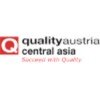Supplier Quality Engineer
20+ Supplier Quality Engineer Interview Questions and Answers

Asked in Wipro Infrastructure Engineering

Q. What are the 7 QC tools and how do they affect the organization?
The 7 QC tools are a set of problem-solving techniques used to identify and solve quality-related issues in an organization.
The 7 QC tools include: Pareto Chart, Cause and Effect Diagram, Check Sheet, Histogram, Scatter Diagram, Control Chart, and Flowchart.
These tools help in analyzing data, identifying root causes of problems, and making data-driven decisions.
By using the 7 QC tools, organizations can improve their processes, reduce defects, enhance customer satisfaction, a...read more

Asked in HCLTech

Q. What is the difference between severity and priority?
Severity refers to the impact of a defect on the system, while priority refers to the urgency of fixing the defect.
Severity is the measure of how much a defect affects the system's functionality or performance.
Priority is the measure of how urgently a defect needs to be fixed.
Severity and priority are often used together to prioritize defects for fixing.
For example, a defect that causes the system to crash would have high severity and high priority, while a cosmetic defect wo...read more
Supplier Quality Engineer Interview Questions and Answers for Freshers

Asked in Faber India

Q. Please explain the 7 QC tools and how they can be used in QMS at our company.
The 7QC tools are a set of quality control tools used to identify and solve quality problems in a systematic way.
The 7QC tools include: Pareto chart, cause-and-effect diagram, check sheet, control chart, histogram, scatter diagram, and flowchart.
These tools can be used to analyze data, identify trends, and pinpoint areas for improvement.
For example, a Pareto chart can be used to identify the most common causes of defects, while a control chart can be used to monitor a process...read more

Asked in Wipro Infrastructure Engineering

Q. what are instruments Handle & tell me LC.
Handle instruments are tools used for gripping and manipulating objects. LC stands for Liquid Chromatography, a technique used for separating and analyzing mixtures.
Handle instruments are designed with a grip or handle for ease of use.
They are commonly used in various industries such as manufacturing, construction, and healthcare.
Examples of handle instruments include pliers, wrenches, screwdrivers, and forceps.
LC, or Liquid Chromatography, is a laboratory technique used to s...read more

Asked in Ask Automotive

Q. How do you calculate PPM/rejection percentage analysis reports using the 8D methodology?
PPM/rejection % analysis report 8D is calculated by dividing the number of rejected parts by the total number of parts produced and multiplying by one million.
Count the number of rejected parts.
Count the total number of parts produced.
Divide the number of rejected parts by the total number of parts produced.
Multiply the result by one million to get the PPM (parts per million) or rejection percentage.


Q. How Handle the inhouse rejection .Which tool is used for rejection reducing .
Inhouse rejection can be handled by using various tools such as root cause analysis, statistical process control, and corrective action plans.
Perform root cause analysis to identify the underlying cause of the rejection.
Implement statistical process control to monitor and control the process variables.
Develop and execute corrective action plans to address the root cause of the rejection.
Use quality tools such as Pareto charts, fishbone diagrams, and control charts to analyze ...read more
Supplier Quality Engineer Jobs




Asked in CNH ( Case New Holland)

Q. How does a transmission shift work?
Transmission shift is the process of changing gears in a vehicle to control speed and power.
Transmission shift involves the use of a gear selector to change gears in a vehicle.
The gear selector can be manual or automatic, depending on the type of transmission.
The transmission shift mechanism connects the engine to the wheels, allowing for different speeds and power outputs.
Proper transmission shifting is essential for smooth acceleration and efficient fuel consumption.

Asked in Schaeffler India

Q. What is meant by quality?
Quality refers to the degree of excellence or superiority of a product or service.
Quality is a measure of how well a product or service meets customer expectations and requirements.
It involves meeting or exceeding standards and specifications.
Quality can be subjective and may vary depending on the context and industry.
It encompasses various aspects such as reliability, durability, performance, and customer satisfaction.
Quality is achieved through effective quality management ...read more
Share interview questions and help millions of jobseekers 🌟


Asked in Wipro Infrastructure Engineering

Q. What are clauses in TS with details
The clauses in TS (Technical Specification) provide specific requirements for supplier quality engineers.
TS clauses outline the quality management system requirements for suppliers.
They define the criteria for product and process control, documentation, and continuous improvement.
Examples of TS clauses include control of nonconforming product, corrective and preventive actions, and supplier monitoring and evaluation.
These clauses ensure that suppliers meet the necessary quali...read more

Asked in Yazaki

Q. What is the manufacturing of products
Manufacturing of products refers to the process of creating goods from raw materials or components.
It involves designing, planning, and executing the production process.
Manufacturing can be done by hand or with the use of machines.
Quality control is an important aspect of manufacturing to ensure that products meet specifications.
Examples of manufacturing processes include injection molding, assembly line production, and CNC machining.

Asked in Wipro Infrastructure Engineering

Q. What does APQP mean and what are its advantages?
APQP (Advanced Product Quality Planning) advantages include improved product quality, reduced costs, and enhanced customer satisfaction.
APQP helps in identifying and addressing potential quality issues early in the product development process.
It ensures that all necessary steps are taken to meet customer requirements and expectations.
APQP promotes cross-functional collaboration and communication, leading to better coordination among different departments.
By implementing APQP,...read more

Asked in Kimplas Piping System

Q. How can you serve clients and work effectively?
By ensuring high quality standards and timely delivery of products, I can serve clients and work towards their satisfaction.
Maintain open communication with clients to understand their needs and expectations
Ensure all products meet quality standards and are delivered on time
Provide prompt and effective solutions to any issues or concerns raised by clients
Continuously improve processes to enhance customer satisfaction
Collaborate with cross-functional teams to ensure seamless d...read more

Asked in Unity Technologies

Q. How many types of plastic molding machines are there?
There are several types of plastic molding machines, including injection molding, blow molding, compression molding, and rotational molding.
Injection molding machines are the most common type and are used to create a wide range of products.
Blow molding machines are typically used to create hollow objects such as bottles and containers.
Compression molding machines are used for larger parts with lower production volumes.
Rotational molding machines are used for creating large, h...read more

Asked in Wipro Infrastructure Engineering

Q. What are the elements of PPAP?
PPAP (Production Part Approval Process) includes elements such as documentation, design records, control plans, measurement systems, and sample parts.
Documentation: PPAP requires the submission of various documents like control plans, process flow diagrams, and FMEA (Failure Mode and Effects Analysis).
Design Records: PPAP includes the submission of design records such as engineering drawings, specifications, and material specifications.
Control Plans: PPAP requires the develop...read more

Asked in Quality Austria Central Asia

Q. Which customers do you have knowledge of, and do you perform Pre-Delivery Inspections (PDI)?
Understanding customer requirements is crucial for effective PDI in Supplier Quality Engineering.
Identify key customers and their specific quality standards, e.g., automotive manufacturers like Ford or GM.
Conduct PDI (Pre-Delivery Inspection) based on customer specifications, ensuring compliance with their quality metrics.
Utilize customer feedback to improve PDI processes, such as implementing corrective actions for recurring issues.
Collaborate with cross-functional teams to ...read more


Q. What is your core strength in QC tools?
My core force in QC tool is statistical analysis.
I rely on statistical analysis to identify trends and patterns in data.
I use tools like control charts, Pareto charts, and histograms to analyze data.
I also use statistical process control (SPC) to monitor and control processes.
By using statistical analysis, I can make data-driven decisions and improve quality.
For example, I might use SPC to monitor the thickness of a coating on a part and adjust the process if it falls outside...read more

Asked in L&T Technology Services

Q. Describe how you would draw a control plan for a part of your choice.
A control plan outlines the processes and measures to ensure product quality in manufacturing.
Identify the part: Example - Medical device component like a catheter.
Define critical characteristics: Dimensions, material properties, and performance metrics.
Establish measurement methods: Use calipers for dimensions, tensile testing for material strength.
Set control limits: Specify acceptable ranges for each critical characteristic.
Outline monitoring frequency: Daily checks during...read more

Asked in Sigma Corporation India

Q. What is Lean Startup x Sigma?
Lean Startup x Sigma is a methodology that combines Lean Startup principles with Six Sigma methodologies.
Lean Startup x Sigma aims to reduce waste and improve efficiency in the product development process.
It involves using data-driven decision making and continuous improvement to create high-quality products.
The Lean Startup methodology focuses on rapid experimentation and customer feedback to validate ideas and minimize risk.
Six Sigma methodologies aim to reduce defects and ...read more

Asked in Kimplas Piping System

Q. What are your technical skills?
Technical skill refers to the ability to perform specific tasks related to a particular field or industry.
It involves knowledge of tools, techniques, and procedures used in the field
It requires practical experience and expertise in the field
Examples include programming languages, engineering design software, and statistical analysis tools

Asked in L&T Technology Services

Q. What is PPAP? Why is it needed?
PPAP (Production Part Approval Process) ensures that suppliers meet quality standards before mass production.
PPAP is a standardized process used in the automotive and manufacturing industries.
It involves documentation and validation of production processes and parts.
Key elements include design records, engineering change documents, and process flow diagrams.
Example: A supplier must submit a sample part and its associated documentation for approval before full-scale production...read more

Asked in Vestas

Q. Core Quality tools usages
Core quality tools are essential for identifying and solving quality issues in the supplier's processes.
Statistical Process Control (SPC) helps monitor and control process variation.
Failure Mode and Effects Analysis (FMEA) identifies potential failure modes and their impact.
Root Cause Analysis (RCA) investigates the underlying causes of quality issues.
Control Charts track process performance over time.
Pareto Analysis prioritizes quality issues based on their frequency or impa...read more

Asked in Manitou Equipment India

Q. Overall quality complete profile
Overall quality complete profile includes all aspects of quality management system and supplier performance.
Quality management system
Supplier performance
Process control
Product testing and inspection
Continuous improvement
Risk management
Compliance with regulations and standards

Asked in Kimplas Piping System

Q. What are human skills?
Human skills refer to the ability to interact and communicate effectively with others.
Human skills involve empathy, active listening, conflict resolution, and teamwork.
Examples of human skills include being able to communicate effectively with coworkers, understanding and responding to customer needs, and building strong relationships with suppliers.
Human skills are essential for success in any field, as they enable individuals to work well with others and achieve common goal...read more

Asked in Swaraj Tractors

Q. What is torque?
Torque is a measure of the rotational force applied to an object.
Torque is calculated by multiplying the force applied by the distance from the pivot point.
It is measured in units such as Newton-meters (Nm) or foot-pounds (ft-lb).
Torque is essential in engineering applications like tightening bolts or rotating machinery.
Higher torque values indicate greater rotational force.
Example: Using a wrench to tighten a bolt requires applying torque to turn the bolt.

Asked in Unity Technologies

Q. Tell me about raw materials.
Raw materials are the basic materials used in the production of goods, typically obtained from natural resources or through manufacturing processes.
Raw materials can be categorized as direct materials (used in the final product) or indirect materials (used in the production process)
Examples of raw materials include wood, metal, plastic, chemicals, and minerals
Quality of raw materials is crucial for the final product quality and performance
Supplier Quality Engineers ensure tha...read more

Asked in Clearpack

Q. How would you reduce assembly complaints?
To reduce assembly complaints, focus on improving supplier quality, implementing strict quality control measures, and providing thorough training to assembly workers.
Improve supplier quality by conducting regular audits and inspections
Implement strict quality control measures throughout the assembly process
Provide thorough training to assembly workers on proper assembly techniques and quality standards
Interview Experiences of Popular Companies








Reviews
Interviews
Salaries
Users

















